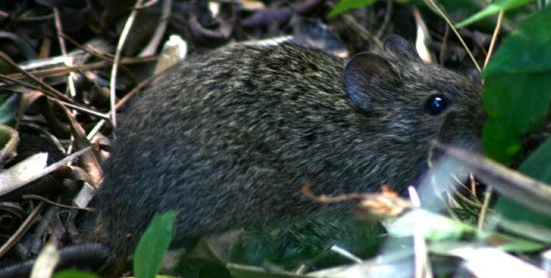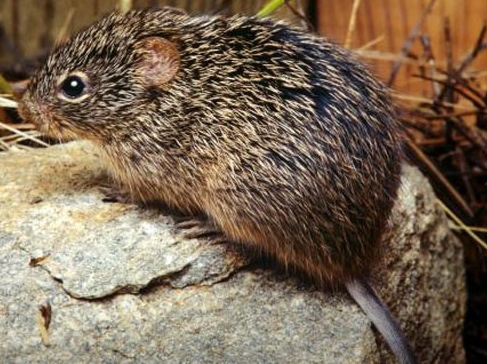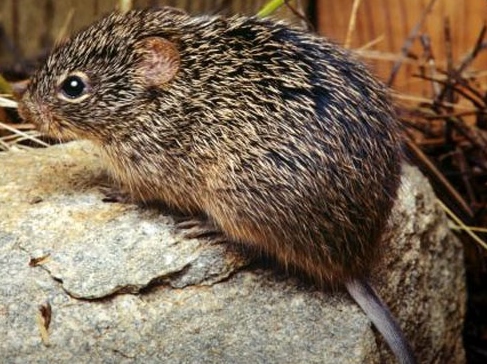
Hispid Cotton Rat: (Sigmodon Hispidus)
Hispid cotton rats (sigmodon hispidus), also known as the cotton rat; is a member of the cricetidae family. They average in size between 8 to 10 inches long including its tail, weigh approximately 7.9 ounces, although the males are usually larger than the females.
The hispid cotton rat has a stout body with small ears and large round black eyes. Their color patterns consist of grayish brown to dark brown coarse fur, having a rough “hispid” appearance. Its under – parts are whitish gray or light brown. Its tail is sparsely furred and shorter than its body. They have 4 toes on their front paws and 5 on their back paws which also has a mixture of black fur. Hispid cotton rats are found mostly throughout the Southern States, including Florida. They prefer to inhibit areas such as grassy fields, over grown road sites, meadows, marshy areas, cactus patches, sabal palms, coconut palms and weedy ditch banks. Basically any location that provides shelter, food and water.
Hispid cotton rats are normally herbivores, consuming roots, stems, leaves, seeds, and a variety of plants. They also consume sugarcane, fruits, berries, nuts and some insects and eggs.
Hispid cotton rats are nocturnal, although sometimes they will venture out during the day. They are active year round and do not hibernate although heavy rains and extreme cold weather will decrease its activities. Hispid cotton rats an run and swim. Hispid cotton rats are territorial and usually solitary, showing aggression toward other rodents inhibiting the same fields. The females hispid cotton rats have smaller home ranges and the males tend to have slightly larger home ranges, with in their home range they create runways that lead to its main nest. They construct nests out of dry grass fibers that are stripped away from larger plant stems, which are normally located in shallow depressions in clumps of grass, sometimes under ground in shallow tunnels, under rocks or logs. Hispid cotton rats have a great scene of smell. It is also believed that hispid cotton rats produce squeaking sounds when threatened. Hispid cotton rats will breed throughout the year. They can begin breeding as early as 2 to 5 months old. They produce several litters yearly, that ranges from 2 to 15 each litter, averaging 5 to 7 each litter. Its gestational period is approximately 27 days long. The mother has the young completely weaned when the young are 3 weeks old which at this time are completely independent, but are not fully grown until they reach 5 months old.
Hispid cotton rats are known to carry numerous diseases such as, hantavirus pulmonary syndrome, rat bite fever, salmonellosis and tularemia, which can be transmitted to humans, pets and livestock.
Hispid cotton rats cause the most damage when their populations peeks, destroying grain, fruit, vegetable, nut, sweet potato, sugar beet, melons and sugar cane crops. They could also damage electrical wiring, walls, insulation when they nest in structures including your home; causing foul orders from defecating and urinating and in some cases, when their young die.


